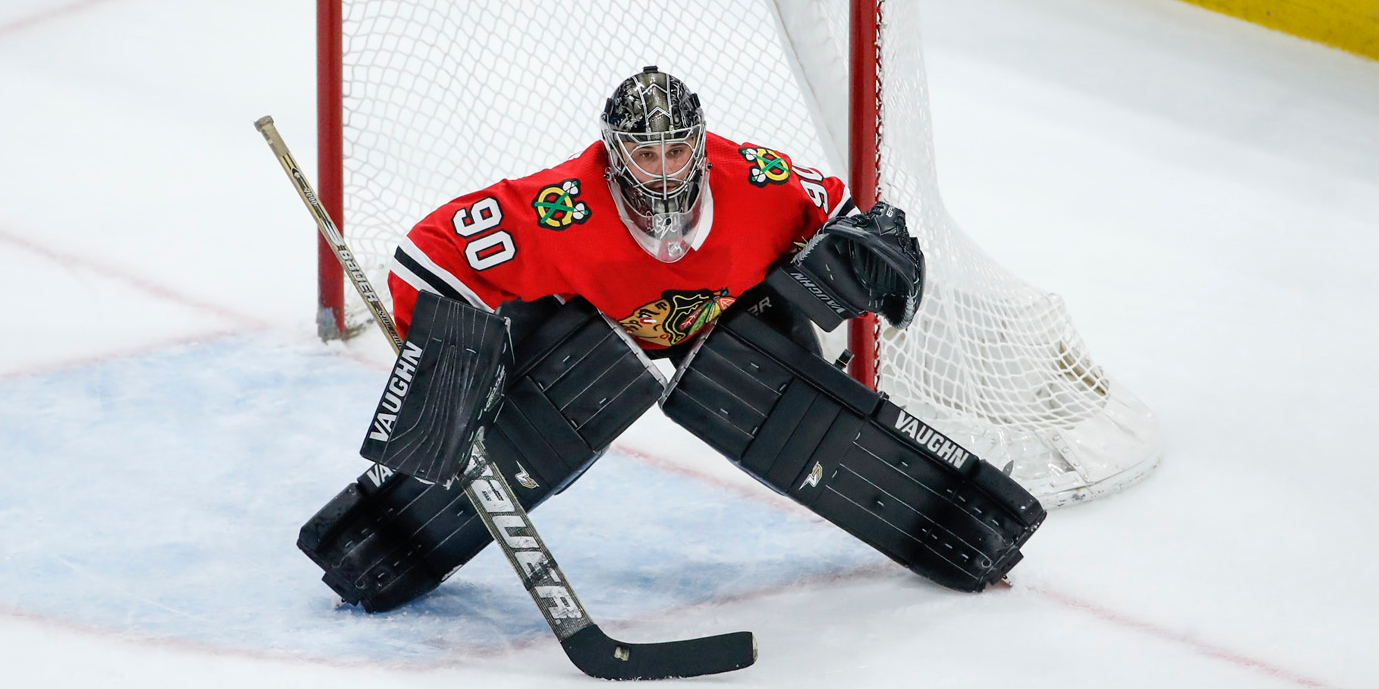- Scott Foster, a 36-year-old accountant from Chicago, filled in as an emergency goalie for the Chicago Blackhawks on Thursday.
- NHL teams must dress two goalies and may attempt to call up a minor-league goalie the day of a game in case of injury or illness.
- If they can’t find a replacement, NHL teams keep emergency goalies, who are “any available goalie who is eligible” to be at the arena and fill in for either club.
- Emergency goalies getting on the ice has rarely happened.
Scott Foster became a sports sensation on Thursday when he filled in as an emergency goalie for the Chicago Blackhawks and successfully defended the net.
After injuries forced the Blackhawks to go through two goalies, including a backup who was called up from the AHL, the Blackhawks turned to Foster, a 36-year-old accountant, as their goalie.
Foster, who plays in a beer-league in Chicago, stopped every shot that went his way, helping the Blackhawks beat the Winnipeg Jets, 6-2.
But why did an NHL team turn to an accountant off the street to take on perhaps the most challenging position on the ice? It’s part of a funky rule in the NHL that has been in existence for years that teams rarely utilize.
Hockey teams can dress 20 players, including two goalies. If one goalie cannot play, NHL teams will try to call up a goalie from a minor-league team to fill in. If that can't be accomplished in time for a game, they can turn to an emergency goalie, who can be "any available goalkeeper who is eligible," according to NHL.com.
In the Blackhawks' case, starting goalie Corey Crawford was already out, leaving Anton Forsberg to tend goal. When Forsberg got hurt before the game, the Blackhawks turned to Colin Delia, who was called up from the AHL. When Delia experienced cramps during the game, the Blackhawks turned to Foster, who that night was called and told to dress. Foster attends 13 games per season and usually just eats arena food and enjoys the experience, according to ESPN's Greg Wyshynsky.
Recent rules have made it so home teams have to have an emergency backup that could fill in for either side, meaning Foster could have also filled in for the Jets, if needed.
Though the system is a little odd, there are complications to having qualified goalies readily available. Even minor league players have obligations to their teams, and there are logistical hurdles, such as travel, that can prevent any minor league goalie from being able to fill in right away. With only 20 players dressing, it would not be the best use of resources to have four goalies on a roster, ready to play at any moment. So in response, teams have to get clever.
Doug Harrison of CBC Sports reported in October that only the Los Angeles Kings and New Jersey Devils hold open tryouts for emergency fill-in goalies.
There's also a matter of pay. Teams wouldn't want to pay goalies to sit around and only play in the direst of circumstances. But in the event of emergency goalies who don't play competitively, creative measures can be taken as compensation. According to Harrison, Arizona Coyotes emergency goalie Nate Schoenfeld used to be paid in souvenirs like hockey pucks and memorabilia before he figured out an actual payment system for sitting in for 30 Coyotes games per season.
While some emergency goalies have dressed and been available to play, very few have ever gotten into the games. Jorge Alves was an equipment manager for the Carolina Hurricanes when he filled in as an emergency goalie in 2016 and is believed to be the first emergency goalie to get on the ice. He played seven seconds.
The incident happens so rarely that the league might not be incentivized to change the rule. And who knows - perhaps Foster can parlay his performance into a full-time NHL gig.

